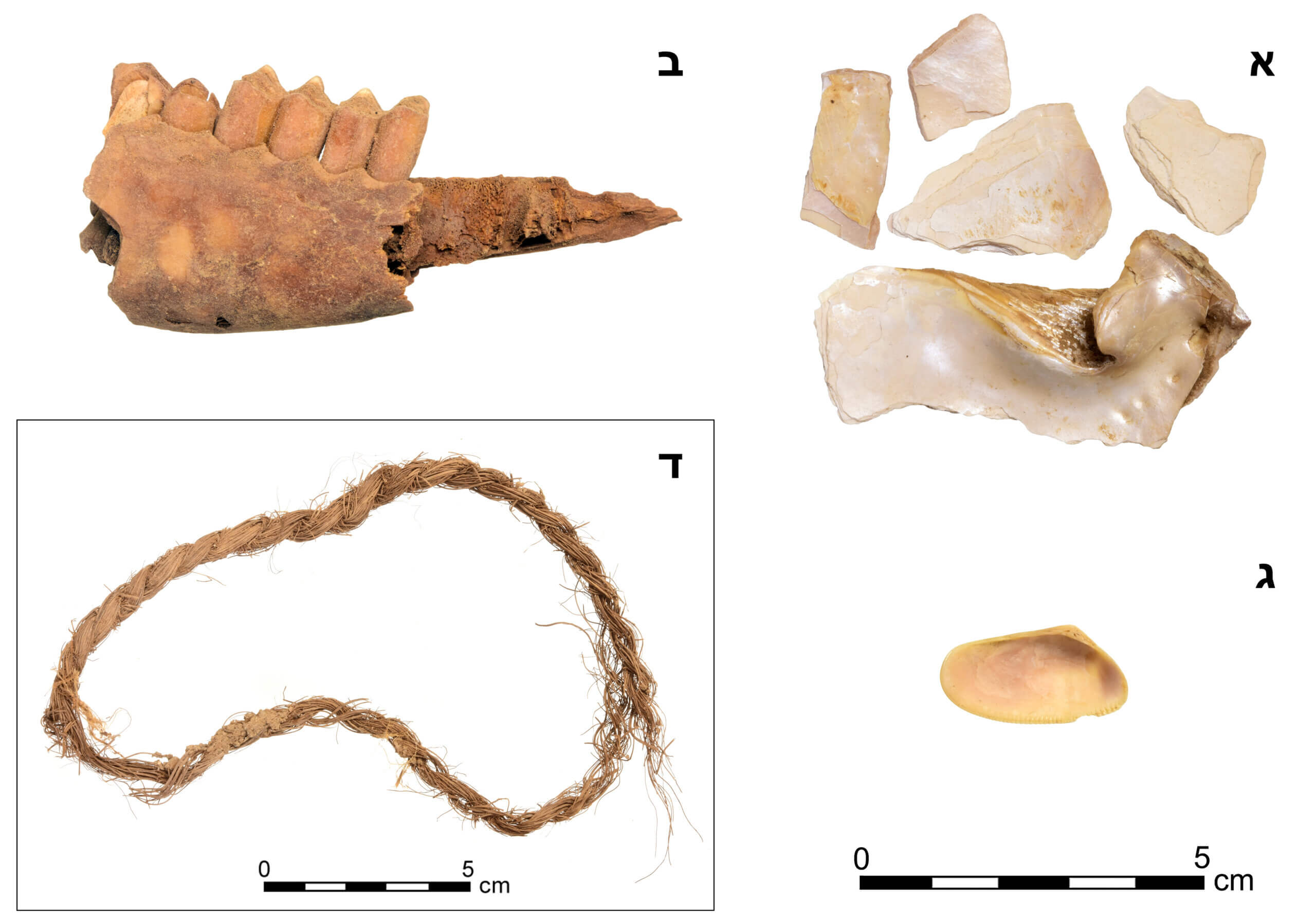"The findings reflect the beginnings of globalization processes in the ancient world and the special importance of the Middle East and the desert space in particular, at the crossroads of East and West" say the researchers

Fish from the Red Sea, oysters from the Mediterranean Sea and the Nile and luxurious bowls from Petra, the capital of the Hebrews: a new archaeological study sheds light on the caravans that moved along the ancient "Perfume Road", which crossed the Arabian desert, through the Negev on its way to the ports of the Mediterranean Sea. "When looking at the composition of trade, three main trends can be identified: intercontinental trade with a central axis to Southeast Asia, international trade that connected the maritime sources, especially between the Red Sea and the Mediterranean Sea, and local trade, which formed the 'economic belt' of the road and provided the raw materials And the food for the walkers on the way", explains Prof. Guy Bar-Oz from the School of Archeology and Maritime Cultures at the University of Haifa, who heads the research group that excavates the ancient rubbish accumulated at the way stations along the way.
The ancient perfume route, which flourished between the XNUMXrd century BC and the XNUMXrd AD, became famous mainly due to the types of spices and perfumes that were transported through it from the Southeast Asian region, through the Arabian deserts to the ports of the Mediterranean Sea. The main artery of the road passed through our area, from Petra, through the Ramon Crater and the Negev Mountains to the Gaza port. Historical evidence documents the demand for the luxury products brought from the East and included cinnamon, black pepper, vanilla, cumin, turmeric and ginger. In recent years, remains of these materials have been discovered at archaeological sites, including sites in Israel. Chemical analysis of jars at Tel Dor revealed remains of cinnamon. Similarly, in Jerusalem, jars were discovered with remains of vanilla and remains of turmeric were discovered in the teeth of a person buried in Megiddo. Most of the archaeological research conducted so far has focused mainly on the consumption centers at the end of the road, to which the goods were transported.
In a new study conducted by Prof. Bar-Oz, PhD student Roi Galili from Ben Gurion University, Prof. Gideon Avni, Dr. Tali Erickson-Gini and Dr. Yotam Teper from the Antiquities Authority, Dr. Daniel Fox from the University of Cambridge and research student Nofer Shamir from the University of Haifa , the researchers wanted to focus on locating the raw materials passed along the way by the caravans themselves and on the journey they went through. To this end, they dug up piles of garbage that had accumulated at three central road stations in the Negev: at Orchan Mor (Moa) and Shaar Ramon (Khan Saharonim), which were used as hostels for merchant caravans, and at Mesad Nekrot, which was used as a guard post to protect the road. "Within the remains of the ashpits we hoped to find the remains of food and the tools used to prepare the food. In general, we wanted to use the variety of raw materials that were discovered in order to determine the intentions of the trade. Did the merchant caravans transport products only from east to west, or did trade flourish in the opposite direction and the caravans returned loaded on the way back as well. These are questions about which until today we had very little archaeological knowledge," explained Prof. Bar-Oz.
The findings that were discovered indicate that the people of the caravans also carried with them more regional goods - mainly fish and seafood. The researchers found fish bones, and several types of seafood: the remains of an edible oyster that comes from the Nile, as well as some remains of edible oysters from the Mediterranean and the Red Sea. Pincers of fresh water crabs were also discovered in Ashpot. A variety of fruit, cereal and legume seeds were also discovered among the finds. The abundance of olive pits and dates reflects the importance of the agricultural hinterland in the economy of the road. The researchers also found fragments of luxury pottery and glass.
The researchers also found evidence of a local economy that supported, as mentioned, the trade caravans. In the excavations, sheep bones, pigs and game meat, chicken eggshells and plenty of plant food were found. According to Prof. Bar Oz, these are most likely the evidence of the food and sustenance that awaited the people of the caravans in those khans along the desert. "The findings reflect the beginnings of globalization processes in the ancient world and the special importance of the Middle East and the desert space in particular, at the crossroads of East and West," the researchers concluded.
More of the topic in Hayadan:
